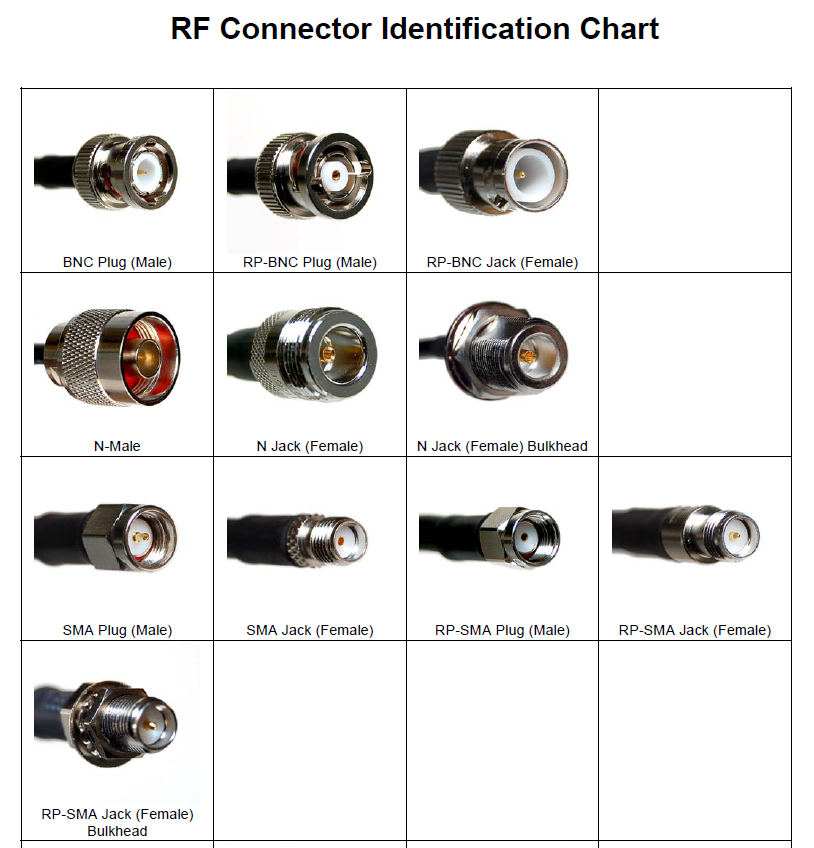- Das Wiki
- zsh.md
- zoneminder.md
- yubikey.md
- yasnippet.md
- xprofile.md
- xmonad.md
- wpa_supplicant.md
- wp3.md
- windows.md
Menu (Edit):
Link List (Edit):
# ____ _ _ _
# / ___|__ _| |__ | | ___ ___ __ _ _ __ __| |
# | | / _` | '_ \| |/ _ \/ __| / _` | '_ \ / _` |
# | |__| (_| | |_) | | __/\__ \ | (_| | | | | (_| |
# \____\__,_|_.__/|_|\___||___/ \__,_|_| |_|\__,_|
#
# ____ _ _ _
# / ___|__ _| |__ | (_)_ __ __ _
# | | / _` | '_ \| | | '_ \ / _` |
# | |__| (_| | |_) | | | | | | (_| |
# \____\__,_|_.__/|_|_|_| |_|\__, |
# |___/
#
Cables and Cabling
One thing my electronics instructor stressed was the importance in selecting the proper wiring. As the smaller the diameter of the wire is, the faster the current will travel and the quicker the current will experience voltage drop. In regards to RF applications cabling can be quite an overwhelming subject, as the number of different cables, each with their own specific purpose, is too numerous to cover in this wiki. The same is the case in regards to cabling connectors. This complexity is compounded by difference variations betwen manufacturers and the requirement of manufacturers to use their own identification schema to avoid violating copyright laws.
Fortunately, only those who specialize in cabling have to know it all. For the average RF user, often what they need can be purchased at any local hardware store, but it is still benefitial to have some basic understanding of cable varieties in order to meet your specific needs.
Table Of Cable
Below is a table consisting of some of the many varieties of cable available. Included are those we possess familiarity with, and these may or may not be the more popular varieties.
| Cable ID | Impedence | Bandwidth | Loss per Foot | Insulation | Bend Rad | Outer Diameter | Features |
|---|---|---|---|---|---|---|---|
| RG316 | 50db | 6ghz | 0.55 | PTFE | 0.50 | 0.098 | Buriable |
| LMR100 | 90db | 5.8ghz | 0.64 | TPE | 0.25 | 0.110 | Flexibility |
| RG174 | 75db | 5ghz | 0.60 | PVC | 0.25 | 0.110 | Flexibility |
| RG188 | 50db | 10ghz | 1.33 | PTFE | N/A | 0.118 | High Temp Op |
| RG6 | 75db | 2.5ghz | 1.48 | Poly | 0.90 | 0.33 | Impedence |
| RG8 | 50db | 4ghz | 0.215 | Poly | 4.00 | 0.403 | Low Loss |
| RG58 | 50db | 1ghz | 0.60 | PVC | 0.98 | 0.195 | Overall Perf |
Connectors
Below is a hand diagram showing some of the most popular rf connectors.

It is important to remember each connector has a different frequency range in which it can operate.

Installation
Below is a graphic that explains the process of connector installation. The import bit is the outer shield needs to be conductive with the outer portion of the connector, and the core wire with the inner core of the connector.

 Anoduck's Das Wiki
Anoduck's Das Wiki